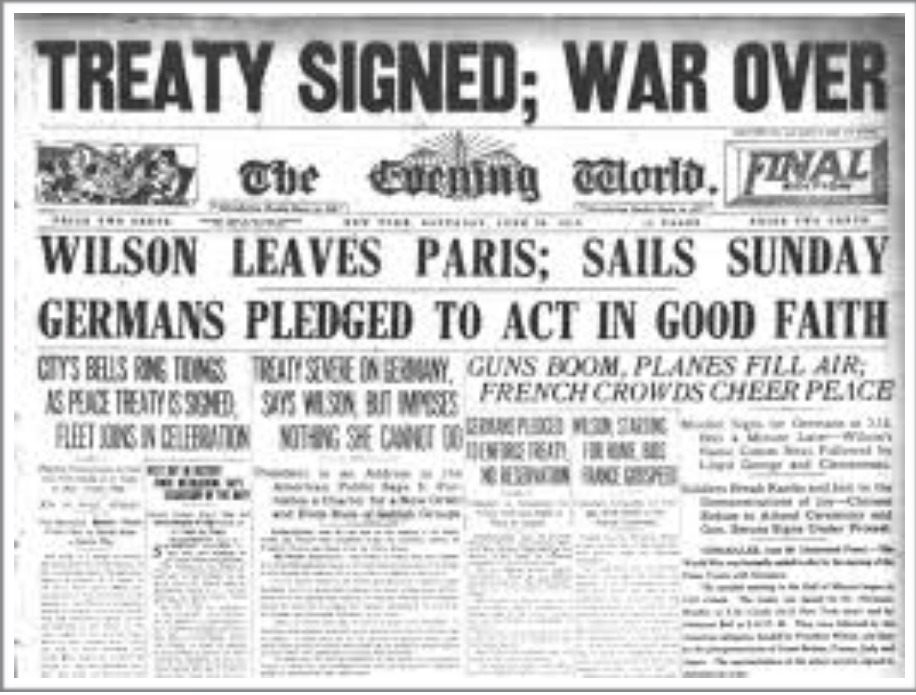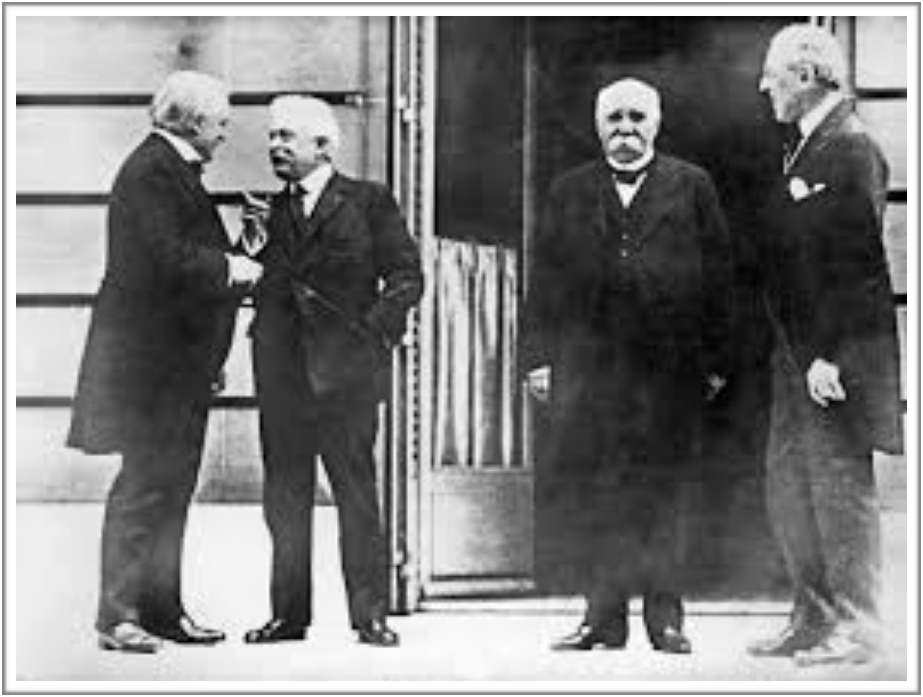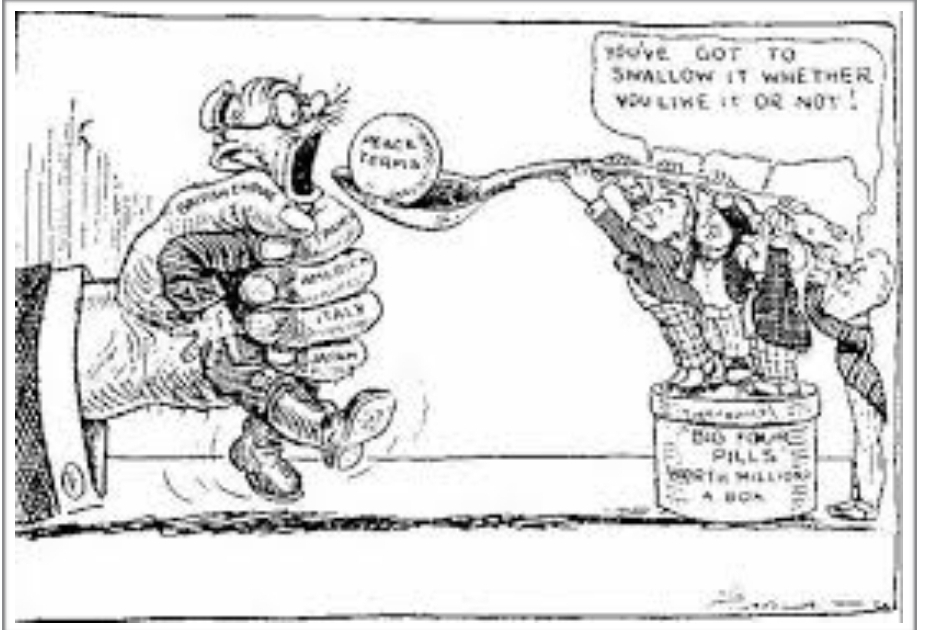One amongst the greatest horrors of human history is the terrorizing memory of the First World War. What started in Europe in 1914 soon engulfed a major part of the world for four years in a series of diplomatic talks, militarized lands, and crashing economies. The First World War, also known as The Great War, divided the superpowers of Europe into two coalitions – the Triple Entente, consisting of France, Russia, and Britain, and the Triple Alliance, consisting of Germany, Austria-Hungary, and Italy. Italy, until April of 1915, remained out of the battlefield, but joined the Triple Entente after the deterioration of its relations with Austria-Hungary. The United States, too, initially remained neutral, but after the sinking of its merchant ships by German submarines, it declared war on Germany in April 1917. Famously remembered as ‘the war to end all wars’, it was a significant event that resulted in major shifts in the social, political, and economic climate around the world. Causing an uprising of over 70 million military personnel, among the major after-effects of the war was a series of treaties imposed by the allied powers on the central powers; the most remembered of them being the Treaty of Versailles.

The Treaty of Versailles was a peace treaty signed between the central powers and the allied powers that brought the war to a close. The armistice was signed in November 1918, and after six months of negotiations at the Paris conference, the final agreement was signed on 28 June 1919 in Versailles. The treaty was based on US President Woodrow Wilson’s proposition of The Fourteen Points. The fourteen points, as outlined by the president, presented his vision of a peaceful world. They elucidated the need for territorial remapping of Europe based on ethnic lines, the need for free trade to bring the economies back on track, and the formation of an association of nations to resolve any conflict and prevent any future wars. This association later came to be known as The League of Nations. The Treaty of Versailles remains one of the most remembered and controversial of all the peace treaties signed during the time. To date, historians and political analysts differ on their understanding and opinions on the treaty.
The Treaty of Versailles was formulated by the Allied forces to make Germany pay the cost of the war, literally as well as metaphorically. It held Germany responsible for starting the war and imposed harsh penalties that Wilson believed would advocate his will for a ‘peace without victory’. While Wilson advocated for a fair and democratic world post the war, the treaty ended up being a brainchild of the ‘Big four’ leaders of that time – Wilson of the United States, David Lloyd George of Great Britain, Georges Clemenceau of France, and Vittorio Orlando of Italy. Germany, Austria-Hungary, Bulgaria, Turkey, and Russia were not represented in the peace negations in Paris. Even as the Big Four were thought to represent world peace and unity, all four leaders advocated their specific interests in the negotiations that contributed to the criticism that the treaty later received. France’s main goal was to protect itself from future attacks by Germany. Since it shared a close border with Germany, it sought heavy demilitarization of Germany and demanded reparations that would destabilize the German economy for a long time. British economist John Maynard Keynes described this position as an attempt to “set the clock back and undo what, since 1870, the progress of Germany had accomplished.” Britain, on the other hand, wanted to give Germany a chance to recover as an economic power to keep its trade relations strong and maintain the balance of power in Europe. Orlando, however, was often sidetracked by the other three major powers raising frequent protests in Italy. Orlando sought a compromise between Clemenceau and Wilson, which the nationalists back in Italy saw as a “mutilated victory”. Lastly, Wilson, who drove the show wanted to create a new world order based on principles of peace and democracy.

The treaty thus evoked mixed responses across the above-mentioned nations. Rightists from all the countries believed that Germany has been dealt with many leniencies, while the leftists advocated for the reparations to be lowered down on Germany and the treaty be made less harsh for the people of the land. However, the most unifying voice emerged out of Germany, which found itself in a state of deep crisis. Germany was made to surrender a huge chunk of its land, was demilitarized, and Rhineland was taken away from its control. In addition to this, the German Army and Navy were reduced in size as Britain reasserted its domination of having the most elaborate navy in the region. However, the most humiliating of all the clauses remained Article 231 that forced Germany to accept full responsibility of starting the war, and thus pay back enormous reparations to the allied forces. This article came to be known as the ‘war guilt clause’ and is often talked about as a major reason for the onset of the Second World War. The ultimatum issued by the Allied governments that the war would resume if Germany did not sign the treaty made the Germans furious, who saw the treaty as a ‘Diktat’ (dictated peace). Thus, to the Germans, the treaty seemed to contradict Wilson’s Fourteen Points, which called for transparency in peace negotiations and diplomacy. Therefore, the treaty was not received as a negotiation for peace, but rather as a form of unfair punishment.

Thus, as one would imagine, the impact of the treaty resulted in more hostility amongst the European superpowers. After signing the treaty, Germany and others reverted to violating the military and financial terms of the treaties. Historians such as Correlli Barnett argued that this happened because the treaty was “hardly a slap on the wrist”, which is why it made Germany emerge much stronger with rising nationalism leading to the Second World War. He argued that this nationalist propaganda described Germans as sufferers of the treaty, which is a convenient distortion of the story, as it was German politicians such as Adolf Hitler who benefited from the treaty. Thus, it can be said that although the Treaty of Versailles might not have directly led to the Second World War, the tremors of it resulted in the rise of nationalist sentiments amongst Germans who wanted to regain their respect.
Now, after over 100 years of signing the infamous Treaty of Versailles, we are left to understand its short term and long term implications. Was the treaty fair or unfair? Was it cruel for Germany or lenient? Was it the best anyone could have done after a deadly and costly war? Perhaps it was all of it and more. The questions have no easy answer as the jury is still out. But after 100 years of the event, what one should try to understand from this in the 21st century is the cost of revenge and the potential destruction that can be caused by rising nationalist sentiments.
Written by – Soumya Dixit
Bibliography
- “The Treaty of Versailles: An Uneasy Peace,” WBUR.org (excerpt from Michael Neiberg, The Treaty of Versailles: A Concise History), August 13, 2017.
- Treaty of Versailles, United States Holocaust Memorial Museum.
- Chan, A. (2020, January 6). Failed Peace: The Treaty of Versailles, 1919. HistoryNet. https://www.historynet.com/failed-peace-treaty-versailles-1919.htm.
- The 100th Anniversary of the Treaty of Versailles. AICGS. https://www.aicgs.org/2020/01/the-100th-anniversary-of-the-treaty-of-versailles/.
- Deutsche Welle. Â Treaty of Versailles 100 years on: A fragile peace and a fraught legacy: DW: 28.06.2019. DW.COM. https://www.dw.com/en/treaty-of-versailles-100-years-on-a-fragile-peace-and-a-fraught-legacy/a-49368146.
Picture links
https://www.wbur.org/hereandnow/2017/08/14/treaty-versailles-michael-neiberghttps://www.melinadruga.com/the-treaty-of-versailles-solved-one-problem-caused-more/https://www.du.edu/news/qa-what-does-versailles-treaty-teach-us-about-aftermath-war




